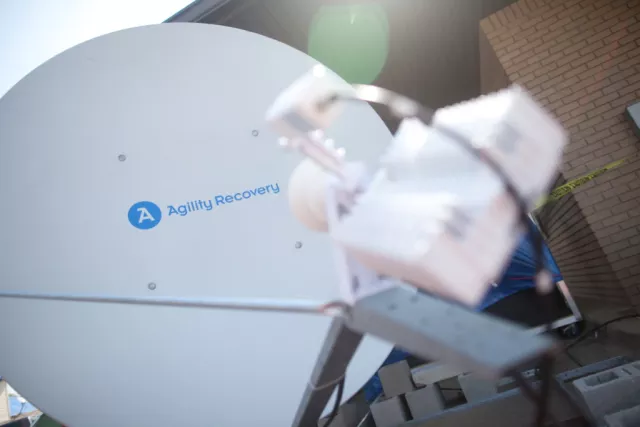Navigating the Complexities of Operational Resilience and Business Continuity

Analyzing data from 147 business continuity professionals, 85 executives, and individuals from 56 firms, the study underscores the pivotal role operational resilience programs play in distinguishing between a business's success and failure during crises.
This article delves into the connection between the report and ongoing events. It also explores how these events influence the perspectives of the continuity professionals surveyed in the study. Prepare for some surprising insights into what experts consider the most dangerous threats and what they believe might not be as critical. While every business has different needs, many of the threats to their continuity plans remain the same.
Perceptions vs. Reality in Operational Resilience
In the realm of operational resilience, perceptions don't always align with reality. While persistent cyberattacks, including DDoS, social engineering, phishing, and ransomware, top the list of perceived threats, several organizations that have experienced these attacks reported minor impacts. Are these threats being overestimated, or are organizations genuinely well-prepared?
On the flip side, terrorist attacks, despite their global prominence, score the lowest in terms of both major impact and future risk. Recent events, such as the massive cache of military weapons left in Afghanistan, highlight the potential for determined bad actors to create global havoc. Some of these weapons have turned up in Kashmir and continue to fuel the conflict between India and Pakistan, two nuclear powers.
The geopolitical landscape adds another layer of complexity. Despite ongoing tensions like Russia-Ukraine and China-Taiwan, geopolitical conflict and war are only recognized as a "top 5" risk by 40% of respondents. This raises questions about our perception of risk in the face of global military powers.
Meanwhile, economic uncertainty casts a significant shadow, with the global economy weakening, interest rates rising, inflation continuing, and recession looming. These facts and figures challenge organizations to navigate the complex terrain of operational resilience and business continuity effectively.
The Lingering Impact of Pandemic Disruption: Perceived vs. Future Risk
Pandemic disruption continues to cast a long shadow over the global economic landscape. It's worth noting that 64% of respondents acknowledge its catastrophic or major impact on businesses. Surprisingly, only 12% consider it a top-5 risk in the future.
This discrepancy may stem from the belief that, as a known event, most companies handled the pandemic well. However, this perspective could be shortsighted. Future epidemics or pandemics may introduce different risk factors and impacts, underscoring the need for ongoing preparedness.
The toll of COVID-19 is a stark reminder. Lockdowns, supply chain disruptions, business closures, illness affecting over 676 million people, and more than 6.8 million deaths worldwide serve as somber statistics. Few business continuity plans effectively addressed the novel virus, leaving uncertainty about their applicability to future pandemics.
Moreover, resilience professionals voice concerns about the technology and human risks associated with the shift to remote and hybrid work trends, citing lower employee engagement, reduced collaboration, and increased burnout. The proliferation of remote work locations adds new physical risks to the equation, as organizations must consider the safety of employees in numerous diverse settings. Exploring the disparities between perceived and future risks sheds light on the multifaceted challenges of operational resilience and business continuity in a post-pandemic world.
Risks of Remote Work: Balancing Benefits and Concerns
While reducing physical office space can boost the bottom line, organizations embracing remote/hybrid work face a delicate balance of benefits and risks. Despite enjoying reduced real estate footprints and expanded labor recruitment opportunities, 65% of respondents express concern about the overall risk associated with current remote/hybrid work strategies.
The advantages for employees, such as eliminated commutes and increased time with family, are tempered by challenges. Diminished engagement, collaboration, and heightened screen fatigue contribute to burnout, potentially impacting productivity and organizational objectives. Human-factor risks abound in the remote workspace, with an expanding cyber attack surface and the presence of external entities—kids, cleaners, pet sitters, and curious roommates—introducing security concerns.
Moreover, the lack of control over local power and internet infrastructure poses additional risks. Questions about technology deployment, broadband/WiFi stability, and potential weather-related outages underscore the complexities of managing a remote workforce. As organizations strive for remote work success, acknowledging and mitigating these risks becomes paramount in maintaining a secure and productive virtual environment.
Unraveling the Investment Landscape in Operational Resilience
The realm of operational resilience is witnessing a surge in spending, but accurately benchmarking these investments poses a challenge for leaders. Parameters such as geographic locations, technology architecture, regulations, and risk tolerance play pivotal roles in shaping effective programs. Whether decentralized or centrally directed, the diversity in operational resilience labor models further complicates spending pattern assessments.
Respondents reveal that 60% of operational resilience spending is directed towards labor and purpose-fit tools, yet the accuracy of spending patterns remains uncertain. Technology failover and alternate workspace recovery constitute a modest 16% of spending, showcasing the challenges in benchmarking accountability and costs.
In the case of outsourcing IT to a third party, the responsibilities of the third-party provider are variable. Making a robust disaster recovery strategy complicated when outsourcing these tasks. With the evolving landscape of remote/hybrid work, traditional work area recovery models are being reevaluated, reflecting shifts in recovery strategies. Before COVID-19, numerous organizations would engage in contracts for a designated "hot/warm" site, intending to recover critical office staff in the event of an impact on a building. However, in the aftermath of the global pandemic, organizations are reassessing the risk/reward proposition of remote/hybrid working arrangements and making adjustments to their recovery strategies.
The remaining 24% of spending is allocated to crucial activities like exercising, testing, training, and travel—a critical investment to bridge the gap between executive expectations and actual preparedness. As organizations navigate the complexities of operational resilience, understanding these investment dynamics becomes pivotal in fostering true preparedness. The study highlights a notable disparity between what executives expect and the actual state of preparedness. To bridge this gap and gain a genuine understanding of readiness, it is crucial to test and exercise capabilities. Furthermore, identifying gaps in recovery time (RTO) and recovery point (RPO) objectives enables better focus and prioritization of efforts to address these shortcomings.
Conclusion
In the intricate landscape of operational resilience, this exploration reveals a striking dissonance between perceptions and realities. From the overestimation of cyber threats to the underestimated risks of geopolitical conflicts, organizations grapple with aligning their strategies with the ever-shifting tides of global uncertainties. The enduring impact of the pandemic, the challenges of remote work, and the enigma of investment dynamics underscore the multifaceted nature of navigating operational resilience. As we unravel the intricacies, it becomes evident that a holistic and adaptive approach is essential for businesses to not only survive but thrive in the face of evolving risks.



